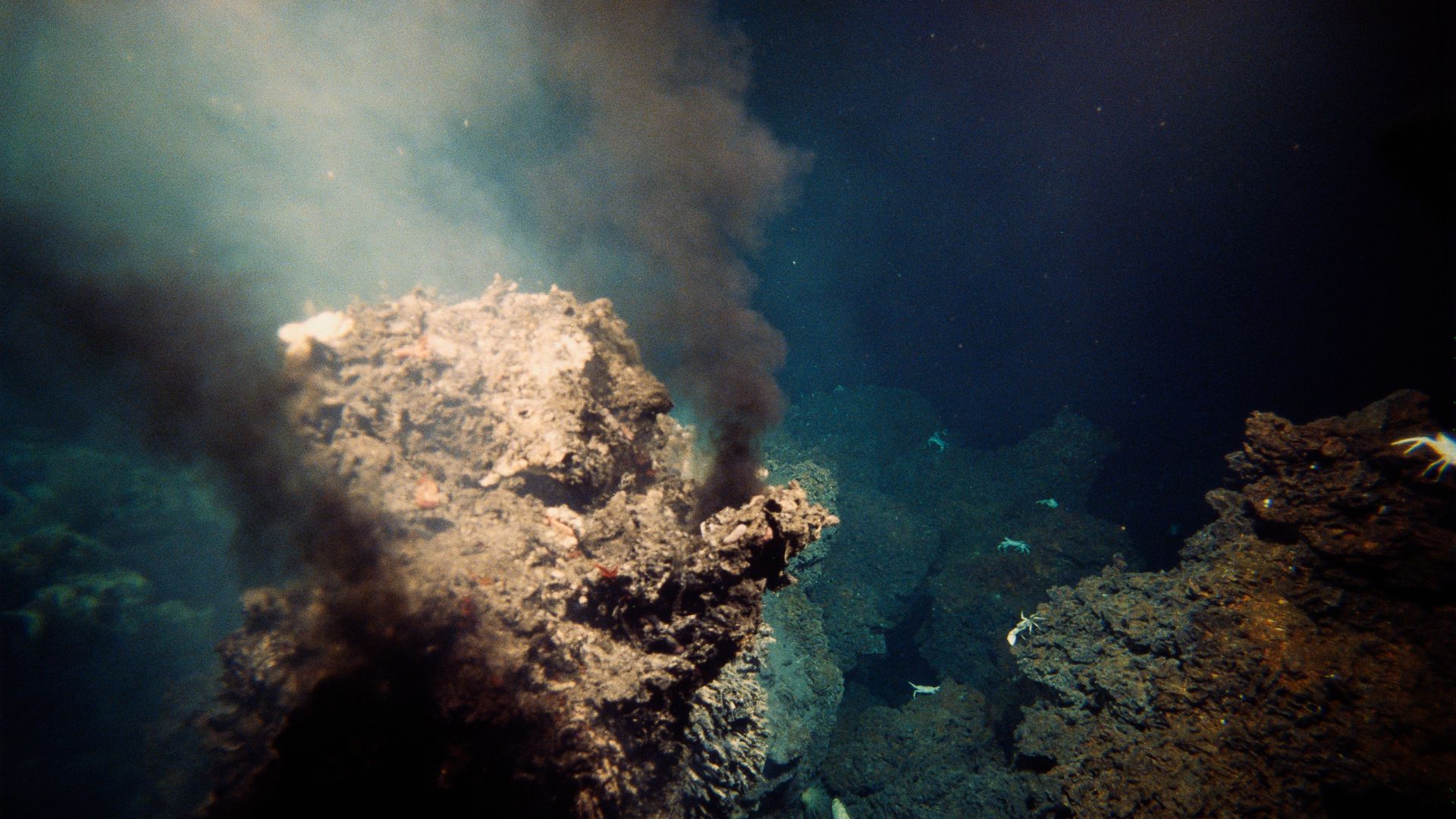Scientists have discovered a massive hydrogen-rich hydrothermal system beneath the western Pacific seafloor. The system was explored using the crewed submersible Fendouzhe.
The system offers a new glimpse into deep-sea serpentinization—a process in which iron- and magnesium-rich rocks chemically react with water to form serpentine minerals and release hydrogen.
Scientists from the Institute of Oceanology of the Chinese Academy of Sciences (IOCAS) revealed that the system is critical to understanding Earth’s internal processes and the conditions that may have fostered life’s origins.
Hundred times larger than the Lost City
Researchers revealed that the Kunlun hydrothermal field—a tectonically active site roughly 80 kilometers west of the Mussau Trench on the Caroline Plate—comprises 20 large seafloor depressions (some exceeding one kilometer in diameter) clustered together like a pipe swarm, a group of vertical or steeply inclined cylindrical rock structures that funnel liquid or gas from Earth’s interior.
The total area is 11.1 square kilometers, i.e., over a hundred times larger than the Lost City, a unique deep-sea hydrothermal field located on the Atlantis Massif, a section of the Mid-Atlantic Ridge.
“The Kunlun system stands out for its exceptionally high hydrogen flux, scale, and unique geological setting,” said Prof. SUN Weidong, the study’s corresponding author. “It shows that serpentinization-driven hydrogen generation can occur far from mid-ocean ridges, challenging long-held assumptions.”
Larger craters were prospected
Published in the Science Advances, the study reveals that the four of the larger craters were prospected using the human occupied vehicle Fendouzhe and have steep walls similar to those of kimberlite pipes, with depths of up to 130 meters. Ecosystems have been observed in smaller pits on the bottom of these pipes. Hydrogen concentrations of ~5.9 to 6.8 millimoles per kilogram in hydrothermal fluids have been obtained using in situ Raman spectra.
Based on discharge area mapping and flow velocity analysis, the Kunlun field’s annual hydrogen flux is estimated at 4.8 × 1011 mol/year, representing at least 5% of the global abiotic hydrogen output from all submarine sources—a notable contribution for a single system, according to a press release.
Geological features—including steep-walled craters resembling kimberlite pipes, explosive breccia deposits, and layered carbonate structures—suggest the hydrothermal activity has followed a staged evolution: gas-driven eruptions first, followed by prolonged hydrothermal circulation and mineral deposition, as per the release.
“What’s particularly intriguing is its ecological potential,” Prof. SUN said. “We observed diverse deep-sea life thriving here—shrimp, squat lobsters, anemones, and tubeworms—species that may depend on hydrogen-fueled chemosynthesis.”
Researchers claimed that this discovery provides a natural laboratory for studying links between hydrogen emissions and primitive life’s emergence. Alkaline, hydrogen-rich fluids like those at Kunlun are thought to mirror early Earth’s chemical environment.
The research team claims that Kunlun hydrothermal system not only expands our knowledge of deep-sea hydrogen processes, but also opens new avenues for identifying untapped submarine hydrogen resources.
